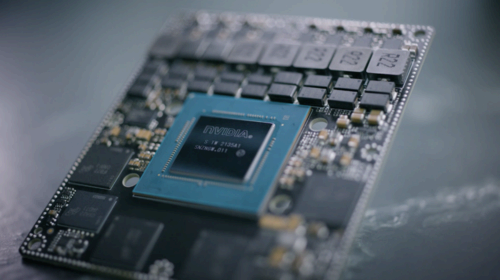
In recent months, the long-running speculation surrounding Nintendo’s inevitable follow-up to the Switch has become more frequent and more specific, pointing to a release sometime in late 2024. Now, the pixel-counting boffins over at Digital Foundry have gone deep with some informed speculation on the system, dissecting leaked details on what they’re convinced is the Nvidia chip Nintendo will be putting in their Switch follow-up.
That chip is the Nvidia T239, a scaled-down, custom variant of the Nvidia Orin T234 that is popular in the automotive and robotics markets. While Digital Foundry can’t say definitively that this is the next Switch chip with “absolute 100 percent certainty,” the website points to circumstantial links and references to the chip in a number of leaks, a recent Nvidia hack, LinkedIn posts from Nvidia employees, and Nvidia’s own Linux distribution.
“From my perspective, the bottom line is that by a process of elimination, T239 is the best candidate for the processor at the heart of the new Nintendo machine,” Digital Foundry’s Richard Leadbetter writes. “With a mooted 2024 release date, there have been no convincing leaks whatsoever for any other processor that could find its way into the new Switch.”
Scale it down
So, assuming that Digital Foundry’s “best candidate” actually ends up in the next Nintendo console, what can we expect from Nvidia’s new, customized T239 processor? To figure that out, Digital Foundry starts with the T234, an Ampere GPU-based architecture with 2,048 cores, a 256-bit RAM interface, and a massive 204GB/s memory bandwidth.
The T234 isn’t really workable for any kind of mobile gaming machine, partly because the massive 455-square-mm chip is significantly bigger than even the processor in the Xbox Series X (to say nothing of the Switch’s 118-square-mm Tegra X1). The T234 also isn’t designed with mobile efficiency in mind; its power-hungry design would have huge implications for battery life on such a system.
Based on hints in the Nvidia Linux distro and the Nvidia hack, Digital Foundry expects the modified T239 will have a more modest 128-bit memory interface with up to 102GB/s of bandwidth to LPDDR5 RAM. The website also expects the custom chip will be scaled down to 1536 CUDA cores, a 25 percent reduction from the massive T234.
Another way to shrink a chip is to make it using a newer manufacturing process that can fit more transistors into a given amount of space. The T234 chip is made on an 8 nm Samsung process, like the nearly 3-year-old RTX 3000-series graphics cards. But this is a good bit behind the absolute state of the art in chip manufacturing these days, and Nvidia could use newer technology (like the RTX 4000-series’ 5 nm TSMC process) to squeeze the same amount of performance into a more Switch-sized chip.
This is a preliminary picture of T234 in Wikipedia. Very clear.
So why do we always guess?
Nintendo will use a customized one, T239. pic.twitter.com/Qp5Im5udlQ— kopite7kimi (@kopite7kimi) June 11, 2021
Digital Foundry’s analysis also suggests the T239 could add a File Decompression Engine, allowing for PS5-style “ultra-fast decompression of assets from storage and into memory.” Using such a chip would require “a much faster storage format” than that on the Switch, but could be key to performance like that seen in a reported Breath of the Wild demo with no loading.
Scale it up
There’s also evidence that the T239 could sport a slightly outdated, Ampere-era version of an “optical flow accelerator.” That part of the chipset could be useful for efficient DLSS upscaling, which would let the system target lower native resolutions (at faster frame rates) while still displaying final images at full HD or even 4K scale resolutions.
Digital Foundry spends a lot of time testing this kind of upscaling on a laptop with an RTX 2050 mobile chipset, which it says provides a “ballpark equivalence” with the graphical performance they expect from the T239. Those results suggest upscaling from a 540p native signal to a 1080p DLSS frame could look “acceptable” on the T239, while doing so from a 720p source could “look pretty great” on the next Switch. Going up to 4K upscaling on such a system could be “far from pristine” but provide “a decent image on a 4K living room TV” based on Digital Foundry’s comparisons.
Of course, there’s a great deal of speculation involved in comparing rumored expectations for a coming console chip to PC game performance on a GPU that we think might be the “closest approximation” available. Digital Foundry acknowledges that these tests don’t account for things like “customization for a mobile platform” or optimizations that developers will be able to make on that specific chipset (as they have on the Switch’s Tegra). The report also doesn’t speculate on important questions like clock speed or total RAM that might be in the upcoming system, which could have a huge impact on the performance.
Even with all those caveats, though, Digital Foundry’s deep dive (and accompanying video) provides a fun and informed tea-leaf reading on the scale of spec bump we might hope for from a new Nintendo console. Of course, this is Nintendo, so there’s always a chance the company will throw a Wii U-style curveball and surprise everyone with a cardboard VR headset that tracks your sleep patterns or something.

